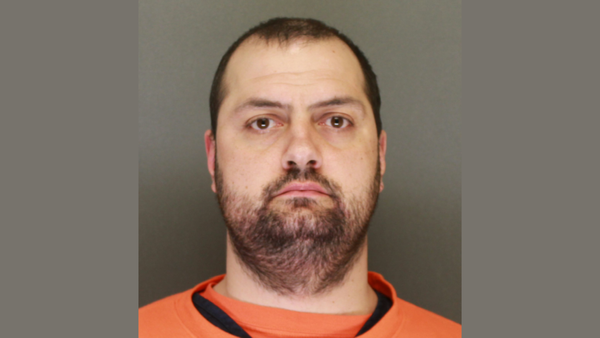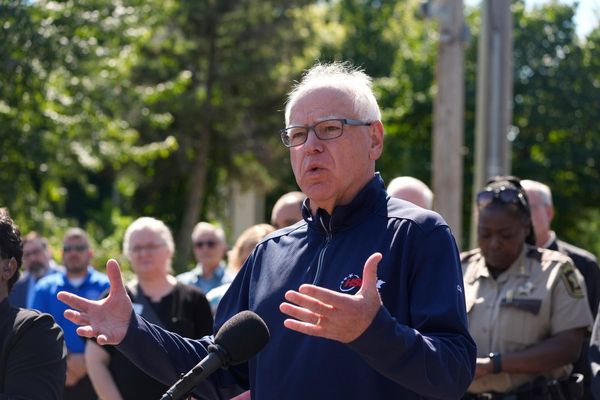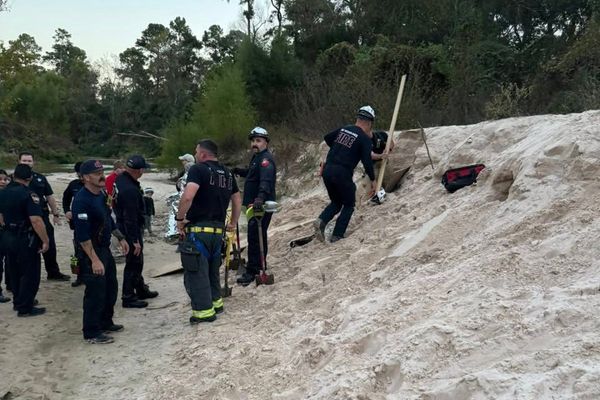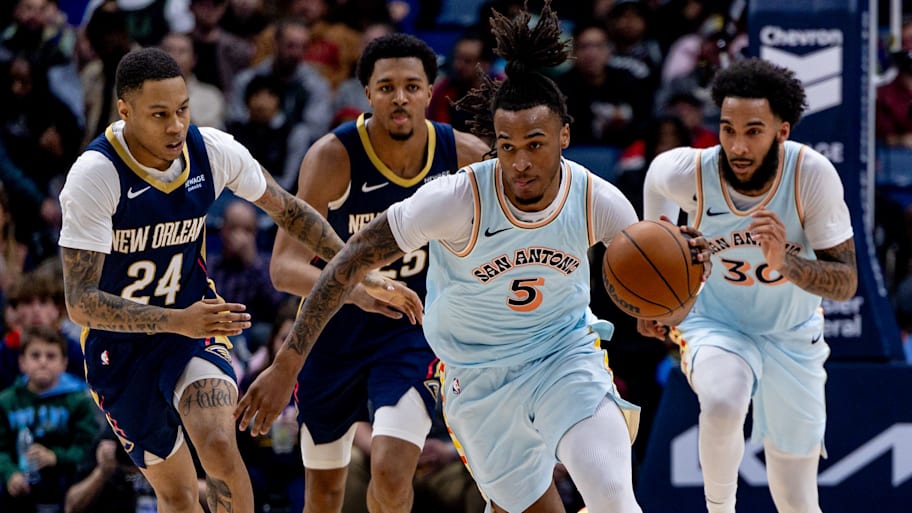
Sports Illustrated’s NBA 100 ranking is back ahead of the 2025–26 season. This season, SI writers Chris Mannix and Liam McKeone voted on the top players. The list represents the top 100 NBA players based on their current projection for this season. Players with long-term injuries were still considered for these projections, but rookies are not included. Only players with at least one NBA season are evaluated against each other. Players are ranked based on their overall skill set and are not weighted based on their team’s performance. We start with Nos. 100–51 today, followed by Nos. 50–11 on Wednesday and the top 10 on Thursday.
100. Stephon Castle
Spurs PG | 14.7 PPG • 3.7 RPG • 4.1 APG
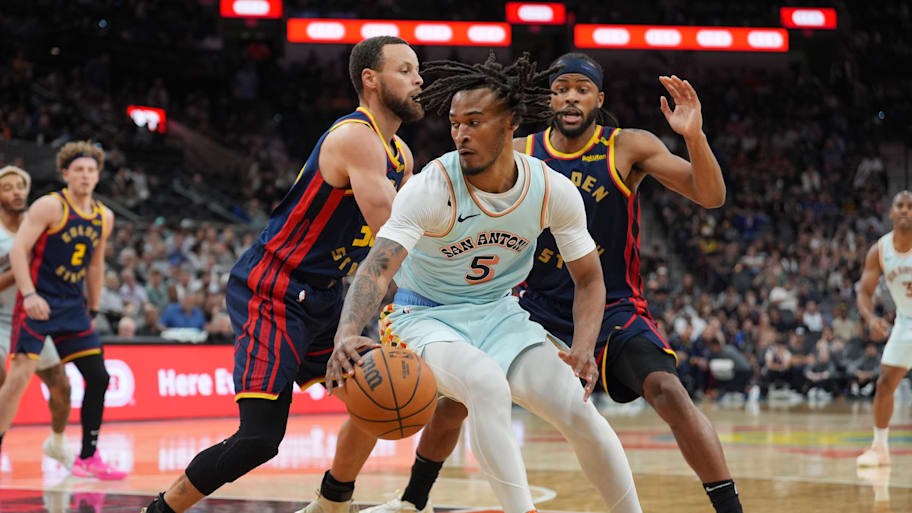
In a supporting role, Castle, last season’s top rookie, put up solid numbers: 14.7 points and 4.1 assists. In a starring role, which Castle took on in the final month of the season, with De’Aaron Fox and Victor Wembanyama out, they were even better. In 18 starts to close out the season, Castle averaged 18.1 points and 6.2 assists. Castle will have to work on his efficiency (42.8%/28.5%) and his role in the Spurs’ suddenly crowded backcourt, but Castle’s combination of skill and defensive versatility will keep him on the floor. Expect a strong sophomore season.
99. Bradley Beal
Clippers SG | 17.0 PPG • 3.7 APG • 38.6 3FG%
Can Beal reinvent himself as a role player? The Clippers, who signed Beal to a deal this offseason, think so. Beal thrived as a high volume scorer in Washington, less as a third option in Phoenix. Still, L.A. is hoping a change of scenery will help Beal rediscover his aggressiveness while fitting into the Clips’ defense-first approach.
98. Herbert Jones
Pelicans SF | 10.3 PPG • 3.9 RPG • 1.9 SPG
Injuries limited Jones to just 20 games last season, but no one thinks his breakout 2023–24 campaign—when Jones earned a spot on the All-Defensive first team and finished fifth in Defensive Player of the Year voting, all while connecting on 41.8% of his threes—was a fluke. Jones is a defensive disruptor, big enough to wrestle with wings and quick enough to be a menace in the passing lanes. Jones’s development from a second-round draft pick into a high-level two-way wing has been remarkable, and it’s unlikely he’s hit his ceiling. If he picks up where he left off two seasons ago, Jones could easily be in the All-Star mix.
97. Nikola Vucevic
Bulls C | 18.5 PPG • 10.1 RPG • 40.2 3FG%
Vucevic has been a walking double-double for most of his 13 NBA seasons and last year was no exception. The veteran center averaged 18.5 points and 10.1 rebounds per night for another middling Bulls team. There is something to be said about his steady production in his age-34 season, even if he doesn’t offer anything defensively and broadly clocks in as a minus starter at this point in his career. Still, centers who can pull down 10 boards a night and shoot 40% from three are rare, and Vucevic is one such player. A perfectly adequate starter for a play-in team.
96. Immanuel Quickley
Raptors PG/SG | 17.1 PPG • 5.8 APG • 37.8 3FG%
Quickley was snakebitten throughout his first full campaign in Toronto. He sprained his thumb during preseason, took a nasty fall on opening night and missed time due to a bruised pelvis, then sprained his UCL upon returning, then missed a handful of games with a groin injury. He was healthy for a stretch around the All-Star break but played intermittently in the second half of the year as the Raptors opted to be generous in the rest days they gave the point guard in pursuit of another lottery pick. This season will hopefully be a healthier one for Quickley and give him an opportunity to demonstrate his two-way chops as a wiry point guard who can shoot, defend and pass at a high level.
95. Dereck Lively II
Mavericks C | 8.7 PPG • 7.5 RPG • 70.2 FG%
Lively battled injury throughout his sophomore season, the most severe of which came in January in the form of a stress fracture that sidelined him for nearly three months. When he did make it onto the court, Lively was the same guy who helped anchor Dallas’s defense en route to the NBA Finals in his rookie season. He posted nearly identical numbers in his second year—8.7 points, 7.5 rebounds and 1.6 blocks per game, with flashes of growth as a passer. Things have changed for Lively, though. He’s no longer set to catch lobs from Luka Doncic for the foreseeable future. Instead he must carve out space in a talented Mavs frontcourt that now features Anthony Davis and Cooper Flagg. Lively’s rim-running, rim-protecting skill set will always be valuable but how he fits into this version of the team remains to be seen.
94. Dillon Brooks
Suns SG/SF | 14.0 PPG • 3.7 RPG • 39.7 3FG%
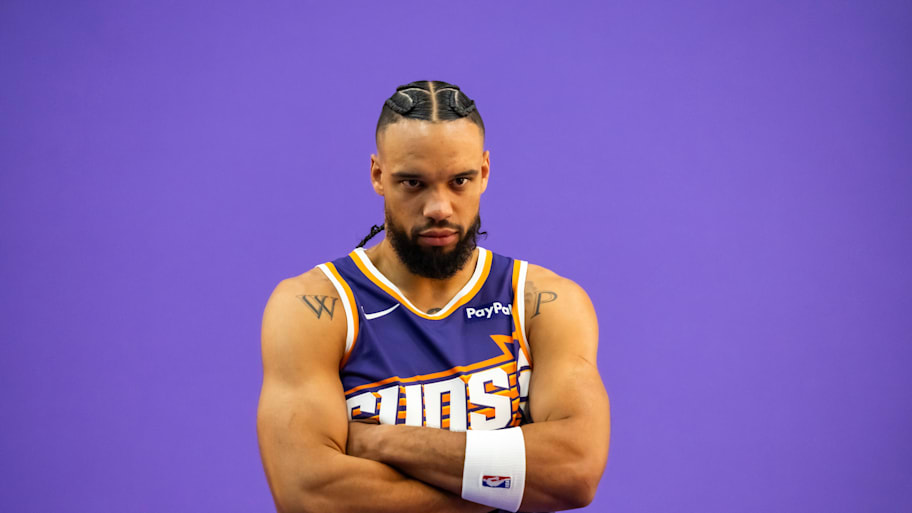
As polarizing as Brooks is, you can’t deny his effectiveness. He’s a versatile, physical and, Rockets teammates would probably argue, an inspirational defender. He isn’t the most efficient scorer (42.9%) but he did connect on a career-best 39.7% of his threes last season and proved he can play well off the ball. Brooks brought some swagger to the Houston locker room, a swagger he will take to Phoenix this season. Whatever distaste you may have for some of his antics, he can be counted on to produce.
93. Andrew Nembhard
Pacers PG/SG | 10.0 PPG • 5.0 APG • 1.2 SPG
Many expected Nembhard to take a leap last year after his breakout performance in the 2024 postseason. That didn’t really happen. The feisty point guard showed his defensive chops most nights but struggled immensely at times offensively. Nembhard failed to hit double-digit points in 33 games and, on the other end of the spectrum, broke the 20-point mark only twice all year. However, he still proved capable of orchestrating Rick Carlisle’s offense and posted a great turnover-to-assist ratio. This season will be a huge opportunity for Nembhard to take the next step as a scorer with Tyrese Haliburton out for the season, but he’ll get playing time regardless thanks to his abilities as a table-setter and point-of-attack defender.
92. Aaron Nesmith
Pacers SF | 12.0 PPG • 4.0 RPG • 43.1 3FG%
Nesmith has long been an agent of chaos on the floor thanks to how hard he plays, but he was more consistent than ever last season and was a true difference-maker for the Pacers en route to the NBA Finals. He’s finally reaching the potential he flashed in college as a shooter, hitting over 40% of his shots from beyond the arc for the second year in a row and shooting a scalding 49.2% from deep during the playoffs. Most importantly, though, Nesmith finally harnessed his energy and athleticism to become a serious pest of a defender. Fouling remains an issue but once Nesmith figures that out he figures to be an ideal 3-and-D wing in an NBA that values those kinds of players very highly. Until then he’ll give Rick Carlisle 25 minutes of nonstop movement a night with good shooting to boot.
91. Devin Vassell
Spurs SG/SF | 16.3 PPG • 4.0 RPG • 36.8 3FG%
Vassell is a pretty good young player in a great position with the Spurs. While it’s become a crowded backcourt in San Antonio, Vassell is the best shooter of the various options coach Mitch Johnson has at his disposal. Last season showed how effective he can be playing off Victor Wembanyama as a scorer. Just as intriguing were the flashes of elite defense Vassell showed when he was locked in. However, his night-to-night production varied wildly. Entering the second year of a $100 million extension, Vassell has a lot of talent but just as much to prove and must start by giving consistent effort on both ends every game.
90. CJ McCollum
Wizards PG/SG | 21.1 PPG • 4.1 APG • 37.3 3FG%
McCollum battled injuries in his 12th NBA season but was still the best three-level scorer on the Pelicans. Which isn’t saying a ton given how many injuries his teammates dealt with, but it’s true nevertheless. McCollum just turned 35 but his skill set hasn’t eroded as a scorer; he averaged over 20 ppg for the 11th straight season. Now with the Wizards, McCollum will officially shift into the next stage of his career as a veteran mentor who will likely cede on-ball opportunities to younger teammates. But someone still has to score in Washington, so McCollum’s stats probably won’t fall too far.
89. Trey Murphy III
Pelicans SG/SF | 21.2 PPG • 5.1 RPG • 36.1 3FG%
Murphy possesses a tremendous combination of traits for a modern NBA wing. He’s a knockdown shooter with enough athleticism to dunk over anybody and the combination of length and intensity to be an impact defender. It all came together often enough last season that Murphy broke the 20 ppg mark for the first time in his young career. But injuries, yet again, proved problematic. The 25-year-old missed 29 games thanks to an early season hamstring strain and a late-season torn labrum. If he can stay healthy, Murphy has a legit chance to become a 50/40/90 player who plays hard on both ends. But until he shakes off the injury woes of the last few seasons, Murphy’s potential is just that.
88. Ausar Thompson
Pistons SF | 10.1 PPG • 5.1 RPG • 1.7 SPG
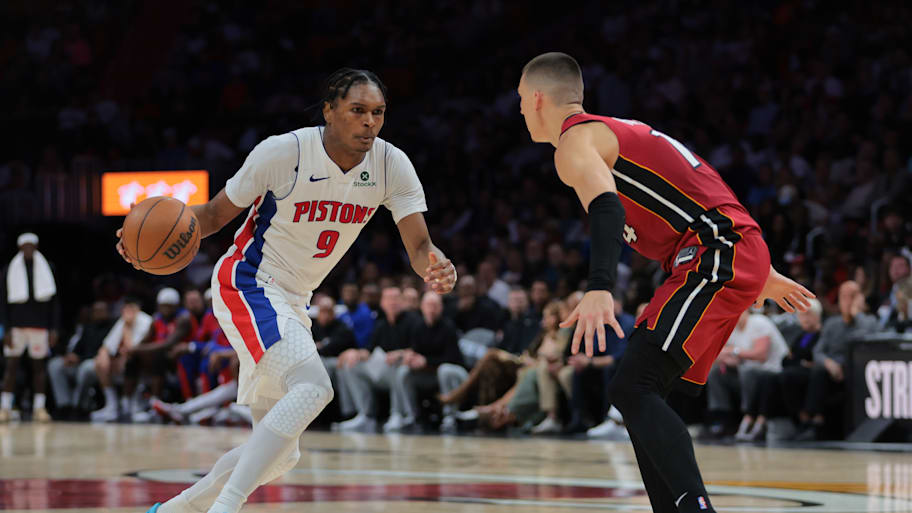
The Thompsons are coming. Ausar is a little behind twin brother Amen in development and doesn’t have the same ball skills. But he’s a relentless defender and rebounder who can harness elite athleticism to score at the rim. Like Amen, Ausar struggles with perimeter shooting and he needs to improve as a playmaker. If he does, he will quickly become one of the NBA’s top two-way players.
87. De’Andre Hunter
Cavaliers SF | 17.0 PPG • 4.0 RPG • 40.5 3FG%
Every second unit needs a guy like Hunter. Hunter didn’t skip a beat after being traded from Atlanta to Cleveland, shooting 42.6% from three in 27 games with the Cavs. With Max Strus sidelined, expect Hunter to (temporarily, at least) reclaim a place in the starting lineup.
86. Josh Hart
Knicks SG/SF | 13.6 PPG • 9.6 RPG • 5.9 APG
Hart was a workhorse for the Knicks last season, averaging an NBA-high 37.6 minutes per game in 77 games. He is a reliable defender and a relentless rebounder who generates offense in transition and slashing to the rim in the half court. A more reliable three-point shot would push Hart closer to the upper half of this top 100.
85. Fred VanVleet
Rockets PG/SG | 14.1 PPG • 5.6 APG • 1.6 SPG
VanVleet still ranks as one of the NBA’s steadiest hands at the point guard position, and his presence will be missed this season as he recovers from torn ACL. His 14.1 points and 5.6 assists per game both were his lowest individual marks since 2019. Yet the stout defender and table-setter proved crucial to winning anyway. VanVleet recorded the second-highest plus-minus on Houston’s roster for the season and the Rockets went .500 in the 22 games he missed en route to a 52–30 finish.
84. Brandin Podziemski
Warriors SG | 11.7 PPG • 5.1 RPG • 37.2 3FG%
Podziemski’s stats suggest he didn’t take a huge leap in his second season with Golden State. But his second-half push should have the Warriors encouraged by his progress. The young guard suffered an abdominal injury midseason and played his best ball yet upon his return. In the last 34 games of the season post-injury, Podziemiski averaged close to 15 ppg and shot over 40% from three as he took advantage of every opportunity garnered by opposing defenses’ attention to his star teammates. It’s still hard to identify his ceiling given Podziemski’s weaknesses as a creator but the way he finished last season suggests he can be a key piece in Steve Kerr’s rotation as a connector going forward.
83. Brandon Ingram
Raptors SF/PF | 22.2 PPG • 5.6 RPG • 5.2 APG
Last season was another injury-plagued campaign for Ingram. He suited up in only 18 games for the Pelicans before he was traded to the Raptors in February; he didn’t make a single appearance in Toronto before he was ruled out for the season as he battled a lingering ankle injury. Assuming he recovers fully, Ingram should bring his usual combination of length and scoring to the court for his new team. He’s silky smooth as an operator on the perimeter and should fit well alongside Scottie Barnes and the rest of the Raptors’ core. Ingram has long left something to be desired defensively and needs to show his improved shot selection from last season is here to stay. But in a weakened East he has the talent to contend for an All-Star slot if he can stay on the floor.
82. Donte DiVincenzo
Timberwolves SG | 11.7 PPG • 3.6 APG • 39.7 3FG%
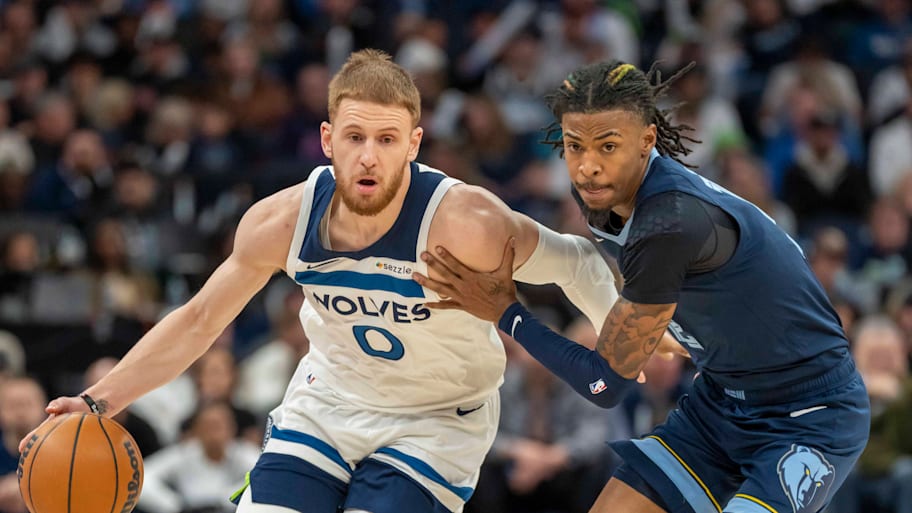
DiVincenzo’s stats took a hit after he was traded to the Timberwolves by the Knicks at the final hour last fall but, similar to his trade-brother-in-arms Julius Randle, he evened out after settling in. The journeyman guard brought steady production to Minnesota’s backcourt off the bench, a much-needed trait given Mike Conley’s offensive decline. DiVincenzo also proved he can play with Anthony Edwards well thanks to his shooting, ranking second in three-pointers out of all his teammates. DiVincenzo is a well-rounded and versatile piece who can slot into any iteration of Minnesota’s lineups.
81. Michael Porter Jr.
Nets SF | 18.2 PPG • 7.0 RPG • 39.5 3FG%
Porter getting flipped to the Nets this offseason should prove mighty interesting. He now has a greener light than he’s ever experienced in his NBA career. When he’s cooking, Porter is a tremendous shotmaker, but his cold streaks are both long and damaging to his team. On top of that, it was a nightly effort throughout his time in Denver to get Porter to commit defensively; it’s hard to see that changing in a positive direction now that he’s playing in Brooklyn. Pairing him with Cam Thomas and a bunch of rookies will be a fascinating basketball experiment regardless of the result. As it stands, Porter enters the season as a talented shotmaker but without impact beyond the points column.
80. Jrue Holiday
Trail Blazers PG | 11.1 PPG • 3.9 APG • 35.3 3FG%
Holiday’s defense is some of the best among all NBA guards, and he’s still physical enough to take on bigger assignments as he enters his age-35 season. The 16-year vet has taken to picking his spots on offense; he averaged 11.1 ppg last season, his lowest since he was a rookie, and rarely creates his own shot at this stage. But he remains a reliable three-point shooter (especially from the corners) and comes across as a true pro’s pro on and off the court. That last trait seems like it’ll be most useful in his new home of Portland, where Holiday joins a crowded and young backcourt in need of veteran mentorship.
79. Kristaps Porzingis
Hawks PF/C | 19.5 PPG • 6.8 RPG • 41.2 3FG%
Porzingis is coming off an … odd season, to say the least. He missed double-digit games to open the season while still recovering from an incredibly rare foot injury suffered during the 2024 NBA Finals. He was very slowly ramped up by the Celtics and seemed to be operating at peak capacity around the All-Star break … then he came down with an unknown illness that was never successfully diagnosed. His battles with the illness carried over into the postseason and sapped him of all his effectiveness; the 7' 3" center managed only 7.7 points per game in 11 postseason appearances before Boston was eliminated and traded him to the Hawks for salary cap purposes. In theory, Porzingis brings a unique combination of spacing and rim protection to Trae Young’s squad in Atlanta, but after two utterly bizarre ailments in the last two years, it’s harder than ever to count on Porzingis to be regularly available.
78. Isaiah Hartenstein
Thunder PF/C | 11.2 PPG • 10.7 RPG • 3.8 APG
Last season started tough for Hartenstein as the physical center fractured his hand during the preseason and missed the first 15 games. Once he got back onto the floor, though, he provided everything expected for the Thunder en route to their championship—hard-nosed paint play on both ends. Furthermore, Hartenstein shored up one of the few weak spots in OKC: rebounding. He led the team in total rebounds by a hilarious margin (he pulled down 611 boards; Shai Gilgeous-Alexander checked in at second with 279) and was huge in helping the Thunder battle against larger teams like the Nuggets and Timberwolves in the postseason. A rock-solid role player with surprising passing chops to boot, Hartenstein did everything he was expected to after signing with the Thunder and now he’s an NBA champion.
77. Jaden McDaniels
Timberwolves SF/PF | 12.2 PPG • 5.7 RPG • 1.3 SPG
Being guarded by McDaniels appears to be a uniquely miserable experience. It’s impossible for opposing ballhandlers to get around his pterodactyl-like wingspan, and any bigger scorer who thinks they can just plow over his narrow frame find themselves sorely mistaken more often than not. The Timberwolves wing is one of the better perimeter defenders in the game and took his disruption to the next level last season, averaging 1.3 steals per night. On the other end, McDaniels had a bigger offensive role than ever in Minnesota, but the results were mixed. He shot under 50% from the field while getting up a career-high number of attempts per game. Nevertheless, the 24-year-old shows up to play every night and finds ways to be a thorn in his opponents’ sides with regularity.
76. Myles Turner
Bucks C | 15.6 PPG • 6.5 RPG • 39.6 3FG%
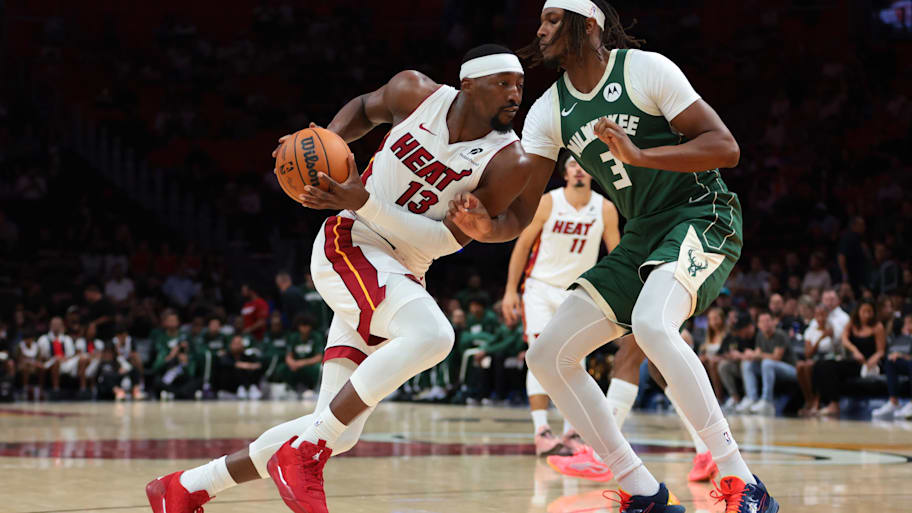
The last time the world saw Turner play basketball wasn’t the best, as the 7-footer struggled mightily in the Pacers’ NBA Finals loss to the Thunder. But the $108 million contract he got in free agency a week later shows the NBA still assigns significant value to what Turner can bring to the table. A true stretch center, Turner is the rare sort of player capable of swishing deep shots while locking down the paint on a nightly basis. He was one of only two players in the entire league to average at least two blocks and two three-pointers made per game. That skill set combined with solid durability (he missed 15 games combined in the last two seasons) indicates Turner is a high-end role player who raises the floor of his team just by being on the court.
75. Christian Braun
Nuggets SG | 15.4 PPG • 5.2 RPG • 39.7 3FG%
Criticisms of Denver’s young talent last season did not include Braun, who slid into the slot vacated by Kentavious Caldwell-Pope and exceeded all expectations. Braun more than doubled his scoring average while posting career highs from the field (58%) and three-point line (39.7%). Braun is a menace in transition and has figured out how to maximize pick-and-roll opportunities with Nikola Jokić in the half court. Throw in the harassing defense that first earned Braun minutes in the Nuggets’ rotation and you have one of the NBA’s most complete young players.
74. Coby White
Bulls PG/SG | 20.4 PPG • 4.5 APG • 37.0 3FG%
White’s numbers have been outstanding since emerging as a full-time starter the last two seasons and there are high hopes that the White–Josh Giddey partnership—which helped Chicago surge to the finish last season—can stick for years to come. The next step for White is to turn great stats into more wins.
73. Cameron Johnson
Nuggets PF | 18.8 PPG • 39.0 3FG% • 89.3 FT%
Johnson looks like the complete package, an efficient, two-way wing who should slide seamlessly into the slot in the Nuggets’ rotation vacated by Michael Porter Jr. But it’s been a few years since Johnson was on a team playing for something, and he has not suited up for more than 58 games since the 2021–22 season. In Denver, Johnson will either make fans forget MPJ … or miss him.
72. Josh Giddey
Bulls PG/SF | 14.6 PPG • 8.1 RPG • 7.2 APG
Giddey settled in nicely to a starting role in Chicago, even pushing his three-point percentage—a concern in Oklahoma City—to a career-best 37.8%. Giddey is a terrific playmaker (7.2 assists per game), able to create in the open floor or in the half court. At 6' 8", Giddey is enormous for a point guard and last season he took advantage of it with some back-to-the-basket work. As uneven a fit as he was with the Thunder, he’s an ideal one with the Bulls and has some great years ahead of him.
71. Naz Reid
Timberwolves PF/C | 14.2 PPG • 6.0 RPG • 37.9 3FG%
Naz Reid. That’s all that needs to be said. Memes aside, Reid had another good season off the bench for the Timberwolves. He averaged a career-high 14.2 ppg and finished fifth in Sixth Man of the Year voting after taking home the award in 2024. The versatility he offers as a true center who can shoot the rock at elite levels is invaluable for Minnesota’s lineup configurations with Rudy Gobert and Julius Randle. Beyond that, Reid expanded his game a bit more in his last campaign with career-high numbers in assists and rebounds. The 26-year-old will be relied upon again for his scoring punch this year.
70. Klay Thompson
Mavericks SG/SF | 14.0 PPG • 41.2 FG% • 39.1 3FG%
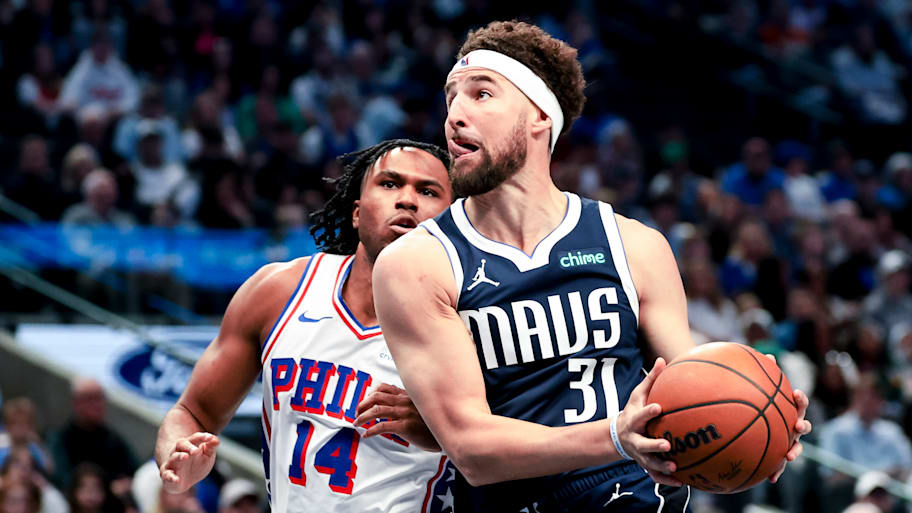
Gone are the days where Thompson was one of the NBA’s top two-way guards. Age and an unfortunate string of leg injuries saw to that. Still, Thompson proved last season he has a long runway as a useful role player. He shot 39.1% from three in his first season in Dallas, suiting up for 72 games for the Mavs. His overall shooting numbers were a little alarming (career-low 41.2%) but some of that can be chalked up to a new role on a team that was nuked two months into the season. Give Thompson open looks playing off of Anthony Davis, Kyrie Irving and Cooper Flagg, and he’ll still make them.
69. Deni Avdija
Trail Blazers SF | 16.9 PPG • 7.3 RPG • 3.9 APG
The 2024–25 campaign will be looked back upon as Avdija’s breakout season—to admittedly little fanfare as he toiled far away from the spotlight for the Trail Blazers. The fourth-year forward has developed into a quality two-way wing, a stat-sheet stuffer who can and will do everything for Portland on a given night. He was efficient offensively last season and wound up forming one of the NBA’s more dangerous defensive duos with Toumani Camara at the wing position. His post-break stats give a glimpse of the heights Avdija could reach: 23.3 points, 9.7 rebounds, 5.2 assists and 1.4 “stocks” per game while shooting over 50% from the floor. If he can carry that over to the new season, Avdija should push for All-Star consideration. If not, he’s still proven he can impact the game in myriad ways each night.
68. Jarrett Allen
Cavaliers C | 13.5 PPG • 9.7 RPG • 70.6 FG%
Last season was a bit of a weird one for Allen. He played in all 82 games for the first time in his career and led all players in field goal percentage, hitting 70% of his shots. But he also averaged fewer than one block per game for the first time in eight NBA seasons. A deeper dive into the defensive numbers suggest Allen still forces opponents to miss shots at an elite rate, so the Cavaliers probably aren’t concerned about the statistical drop-off. He still makes for a bit of an odd fit with Evan Mobley in the frontcourt, but Allen is very consistent on both ends and is perfectly content to do what he does best, night after night. He should rank among the best rim-running and rim-protecting big men in the NBA again this upcoming season.
67. Mikal Bridges
Knicks SG/SF | 17.6 PPG • 3.7 APG • 50.0 FG%
Bridges was burdened with significant expectations last season after the Knicks forked over a whopping five first-round picks to acquire him from the Nets, and relative to those expectations he suffered a down season. But outside of that context, Bridges was perfectly adequate in his first season at Madison Square Garden. He furthered his reputation as the NBA’s iron man, leading the league in minutes played for the demanding Tom Thibodeau while taking the toughest defensive assignment on the perimeter every night. All the while Bridges had to take a step back offensively, learning how to play off Jalen Brunson and Karl-Anthony Towns after a few seasons as the No. 1 option in Brooklyn. It was a tough season shooting-wise for the 29-year-old wing, but he played his best ball in the playoffs—and this season could bring more of that version of Bridges now that he’s settled in Manhattan.
66. Lu Dort
Thunder SG/SF | 10.1 PPG • 4.1 RPG • 41.2 3FG%
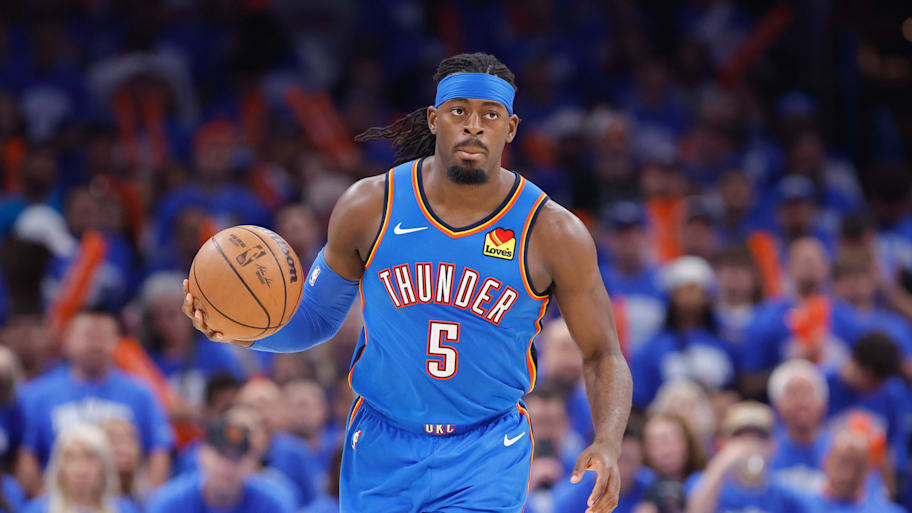
Dort is a middle linebacker in an NBA jersey, a sturdy, physical—sometimes too physical—defender who has drawn comparisons to Ron Artest. Dort is arguably the crowning achievement for Oklahoma City’s player development machine, rising from undrafted free agent to All-Defensive first team to starting wing on an NBA champion. Dort’s offensive bag isn’t nearly as deep, but over the last two seasons, he has evolved into a reliable three-point shooter.
65. DeMar DeRozan
Kings SG/SF | 22.2 PPG • 4.4 APG • 47.7 FG%
Toronto, San Antonio, Chicago, Sacramento—it doesn’t matter. DeRozan is DeRozan, an efficient, inside-the-arc scorer who is reliable in the fourth quarter. DeRozan is the last remnant of a forgotten age, a player who utilizes footwork more than athleticism, who uses angles in pick-and-rolls to bury defenders under an avalanche of midrange jump shots. DeRozan is a minutes eater whose game continues to age well (his per-36 numbers are nearly identical the last three seasons), leaving little reason to believe this season won’t be like the last.
64. RJ Barrett
Raptors SG/SF | 21.1 PPG • 6.3 RPG • 5.4 APG
Barrett’s game has developed nicely in Toronto, with bumps in scoring (21.1 points per game) and three-point efficiency (35%) in his first full season with the Raptors. Barrett flashed some playmaking skills, too, handing out a career-best 5.4 assists per game. Barrett is prone to lulls in efficiency and he takes a few too many contested shots, but he ranked in the top 20 in points in the paint last season and is a solid rebounder at the wing. In Toronto, Barrett may have more layers to his game to peel back.
63. Alex Caruso
Thunder PG/SG | 7.1 PPG • 1.6 SPG • 35.3 3FG%
Oklahoma City’s old head—that’s what they call 31-year-olds in Oklahoma—came as advertised to the Thunder last season, defending everyone from Nikola Jokić to Anthony Edwards in the postseason on one end and making timely shots on the other. Caruso won’t put up big numbers, but as much as any player on this list, his contributions go beyond the numbers.
62. Payton Pritchard
Celtics PG/SG | 14.3 PPG • 3.5 APG • 40.7 3FG%
Pritchard three-point bombed his way to the Sixth Man of the Year award last season, setting a league record for threes made off the bench. Pritchard has been a durable (at least 80 games in each of the last two seasons), efficient (40-plus percent from three in three of his five years) part of Boston’s title-chasing rotation. With the Celtics retooling, expect Pritchard to see a bigger role.
61. Dyson Daniels
Hawks PG/SG | 14.1 PPG • 5.9 RPG • 3.0 SPG
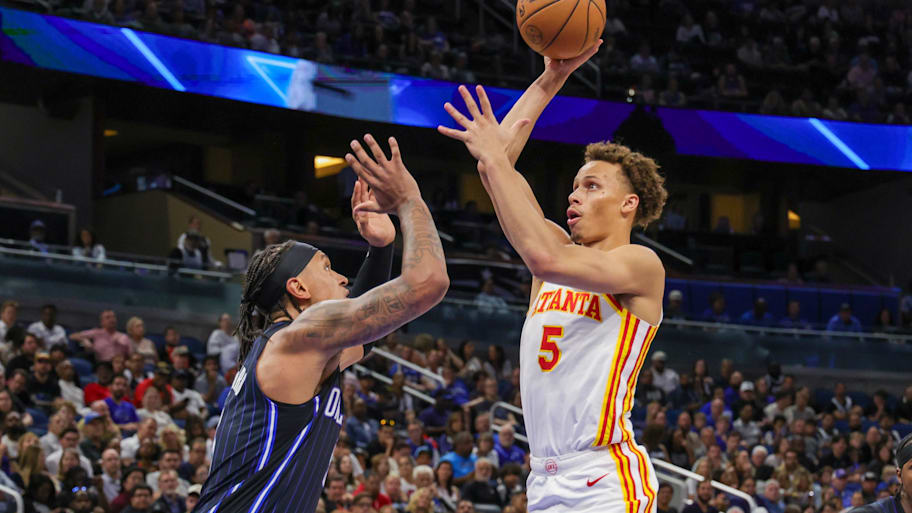
The ball-hawking Daniels was a breakout star from last season, nearly tripling his scoring average and leading the league in steals. The accolades Daniels earned included the NBA’s Most Improved Player, a first-team All-Defensive nod and runner-up for Defensive Player of the Year. At 22, Daniels still has a lot of room to grow.
60. Norman Powell
Heat SG/SF | 21.8 PPG • 3.2 RPG • 41.8 3FG%
Powell talked the talk last season—remember when he declared the Clippers would be better without Paul George?—then went out and backed it up, averaging a career-best 21.8 points per game. Powell’s increased three-point output (career-high 7.1 attempts per game) didn’t impact his efficiency (41.8%) as he proved more than capable of handling a bigger role. The Clippers, perhaps leery of committing major cash in a contract extension, flipped Powell to Miami, where he will team up with Tyler Herro in a dynamic offensive backcourt.
59. Paul George
76ers SF/PF | 16.2 PPG • 5.3 RPG • 35.8 3FG%
George is coming off his worst season in over a decade. Harried by injuries and suiting up for a decimated 76ers team for much of the year, PG-13 managed only 16.2 ppg on 43% shooting and his worst showing from three-point land since his rookie season. Most concerning for Philly is that George looked every bit the part of a 35-year-old NBA veteran with a ton of mileage on his legs. The $211 million deal he signed with the Sixers last offseason is already looking like one of the worst deals in the NBA. On the plus side, George’s first season in Philadelphia could not have gone worse, so he can only go up from here … probably.
58. Brandon Miller
Hornets SF | 21.0 PPG • 4.9 RPG • 3.6 APG
Miller was able to suit up for only 27 games last season before a wrist injury ended his season in January, but there were glimpses of the player the Hornets hoped they were drafting when picking Miller second in the 2023 NBA draft. The former Alabama star averaged 21 points per game as a sophomore, and as that number suggests he generally looked more comfortable with the speed of the NBA game. There are still plenty of areas where Miller needs to make strides to become a plus starter but his fluid athleticism and scoring instincts give Charlotte plenty of reason to be excited about how he’ll progress in Year 3.
57. Zach LaVine
Kings SG/SF | 23.3 PPG • 4.2 APG • 44.6 3FG%
Too often LaVine’s bloated contract (he has two years remaining on the five-year, $215 million deal he signed in 2022) overshadows his talent. LaVine is a certified bucket-getter, an efficient (51.1% from the floor), three-level scorer (44.6% from three) who can slide into a playmaker role when needed. His numbers are often perceived as empty calories—LaVine has played in just one postseason series—but he continues to rank among the most dynamic offensive players in the game.
56. Austin Reaves
Lakers SG | 20.2 PPG • 5.8 APG • 37.7 3FG%
Reaves is a smooth operator on offense who took his game to another level last season. The Lakers guard hit the 20 ppg mark for the first time in his career as he was trusted with more ballhandling duties than ever before in Los Angeles. He’s a well-rounded scorer who shoots at or above league average from three, inside the arc and from the free throw line. Reaves’s height allows him to whip the ball all over the court and the fact that he dished nearly six dimes per game only hints at how often he’s tasked with keeping the offense on track. His value is incalculable to the Lakers as a secondary creator who can take the burden off Luka Doncic and LeBron James, and based off his trajectory so far Reaves is capable of shouldering more responsibilities without suffering a drop-off in his game.
55. Draymond Green
Warriors SF/PF | 9.0 PPG • 6.1 RPG • 5.6 APG
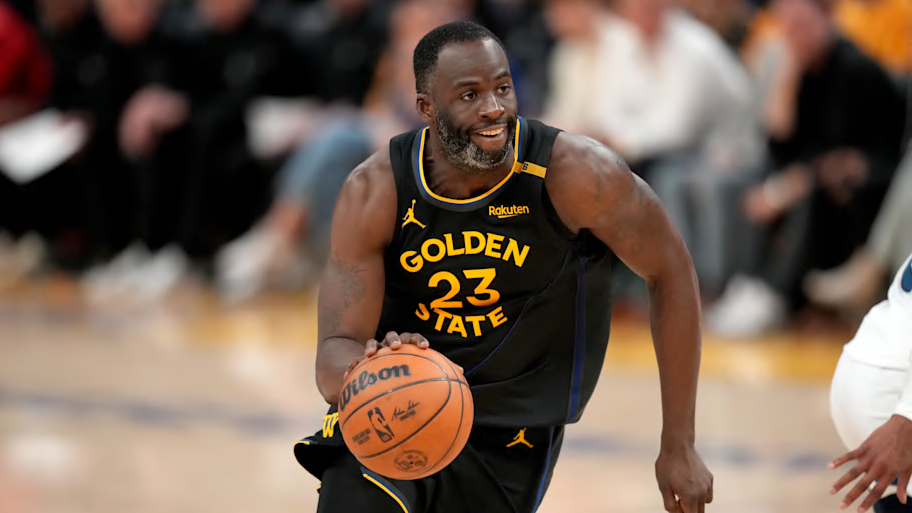
Green remains one of the league’s most cerebral, effective defenders and its biggest instigator. The longtime Warriors star’s athleticism has fallen off as he enters his 14th NBA season, but it hasn’t made him less effective; Green was named to his ninth All-Defense team last season and finished third in Defensive Player of the Year voting. It remains remarkable to watch Green bark orders from the backline of the defense while ensuring he is always in the right spot to blow up an opponent’s action or contest a shot. And, even as he continues to decline as a scorer, Green is still crucial to the Warriors’ offense as a screener and excellent passer. His tendency to lose control in an effort to get under opponents’ skins remains an issue for his team but as long as he keeps that in check Green will be one of the most valuable defenders in the league whenever he’s on the court.
54. Lauri Markkanen
Jazz SF/PF | 19.0 PPG • 5.9 RPG • 34.6 3FG%
Some of the shine has come off Markkanen since his breakout 2023–24 season. His efficiency dipped last season, with his three-point percentage falling to 33.7%—the lowest since his rookie year. Chalk some of that up to the fact that Markkanen is no longer taking anyone by surprise, some of it to playing on a team that was counting Ping-Pong ball combinations by Christmas. Markkanen slimmed down this offseason. While nothing will make the Jazz competitive in a loaded Western Conference, the team is hoping its publicly declared commitment to winning will bring more out of him.
53. LaMelo Ball
Hornets PG | 25.2 PPG • 4.9 RPG • 7.4 APG
No player has a greater discrepancy between how cool their highlights look and how much their play impacts winning. Ball’s mixtape is long and electric, filled with never-before-seen crossovers and genuinely ludicrous shotmaking. But as entertaining as it is, the circus Ball puts on doesn’t equate to winning games. Moreover, the point guard’s injury history is both concerning and consistent; Ball has played fewer than half of all Hornets games in the last three seasons. Until his team starts winning games and Ball can show he’s capable of consistent availability and effort on both sides of the ball, his all-flash no-substance reputation will be hard to shake.
52. Julius Randle
Timberwolves C/PF | 18.7 PPG • 7.1 RPG • 4.7 APG
Randle took a while to settle in after he was suddenly traded to the Timberwolves by the Knicks on the eve of training camp. Once he did, though, Anthony Edwards & Co. were glad to have him. Randle is a multifaceted offensive talent, a bowling ball of an athlete who is nigh unstoppable once he gets into the lane. Too big for most guards, too quick for most forwards and stronger than nearly everybody else on the floor, Randle averaged 18.7 points, 7.1 rebounds, and 4.7 assists last season as he learned how to attack off-kilter defenses who zeroed in on his superstar teammate. Consistency can be a problem in Randle’s game but when he’s clicking he’s entirely capable of carrying the Wolves on both ends of the floor.
51. Scottie Barnes
Raptors SG/SF | 19.3 PPG • 7.7 RPG • 5.8 APG
There’s no doubt Barnes is a good player: He averaged 19.3 points, 7.7 rebounds and 5.8 assists last season and is just a year removed from his first All-Star nod. Can he be a great one? The jury is out. Barnes, as the numbers reflect, was solid. But his efficiency numbers (44.6%) was a career lows and his three-point percentage cratered (27.1%). The addition of Brandon Ingram to the rotation adds a new wrinkle. Will Ingram’s singular scoring ability blend with Barnes’s all-around game? Or will their skill sets overlap?
More NBA on Sports Illustrated
Listen to SI’s NBA podcast, Open Floor, below or on Apple and Spotify. Watch the show onSI’s YouTube channel.
This article was originally published on www.si.com as 2025 SI NBA 100 Rankings, Nos. 100–51: Stephon Castle Shines As Newcomer.

